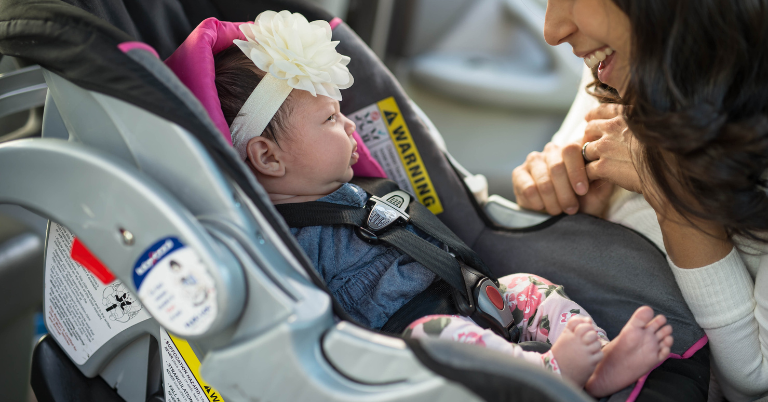
Introduction
Car accidents are a leading cause of injury and death in children, which is why car seat safety is so important. One way to ensure that car seats are safe and reliable is by adhering to the ECE R44 safety standards. In this article, we will explore the different types of car seats, their requirements, and how to ensure your child is safely secured in a car seat. We will also discuss the benefits of adhering to ECE R44 safety standards and provide tips on how to choose the right car seat that meets these standards.
ECE R44 Safety Standards:
The ECE R44 safety standards are regulations developed by the United Nations Economic Commission for Europe (ECE) to ensure that car seats are safe for children. These standards include requirements for materials, design, construction, testing, labeling, and installation of car seats. ECE R44 safety standards are important for ensuring that car seats meet minimum safety requirements and provide adequate protection to children in case of an accident. Adhering to these standards can help protect children from injury or death in the event of an accident.
Understanding the Different Types of Car Seats and Their Requirements:
There are three main types of car seats: infant car seat, toddler car seat, and booster seat. Each type has specific requirements that must be met in order for it to be used safely. Infant car seats are designed for babies up to 22 pounds and must be installed rear-facing. Toddler car seats are designed for children weighing 22 to 65 pounds and can be installed rear or forward-facing. Booster seats are designed for children weighing 40 to 100 pounds and must be used with a lap and shoulder belt. It is essential to understand the requirements for each type of car seat to ensure that your child is safe while traveling in the car.
How to Ensure Your Child is Safely Secured in a Car Seat:
Proper installation and use of car seats are essential for ensuring your child's safety while traveling in the car. The following are some steps you can take to ensure that your child is safe and secure in their car seat:
- Proper Installation: Read the car seat's instructions carefully and follow them closely. Ensure that the car seat is installed according to the instructions and that it is securely fastened to the vehicle.
- Use the Correct Size: Make sure that you are using the correct size car seat for your child's age and weight. Check the car seat's weight and height limits to ensure that your child is within the range for the seat.
- Secure Straps: Make sure that all straps are securely fastened and that the chest clip is at the level of your child's armpits.
- Check for Movement: Once the car seat is installed and your child is secured, check for any movement in the seat. If the seat moves more than an inch in any direction, it is not securely installed.
By taking these precautions, you can help keep your child safe while traveling in the car.

Benefits of Adhering to ECE R44 Safety Standards:
Adhering to ECE R44 safety standards provides several benefits, including improved safety, increased reliability, and cost savings. When a car seat meets ECE R44 safety standards, it has undergone rigorous testing and meets specific performance criteria. This ensures that the car seat is safe and reliable for children in case of an accident. In addition, adhering to these standards can help save money by avoiding the cost of replacing a car seat that does not meet safety standards. Most importantly, adhering to ECE R44 safety standards can help protect children from injury or death in the event of an accident.
How to Choose the Right Car Seat That Meets ECE

When it comes to choosing the right car seat that meets ECE R44 safety standards, there are a few important factors to consider. Firstly, it is important to choose a car seat that is appropriate for your child's age, weight, and height. The ECE R44 safety standards provide guidelines for the design and manufacture of car seats, taking into account the physical characteristics of children at different stages of development.
Infant car seats are designed for newborns and young infants, typically up to around 15 months old or until they reach a weight of around 13 kg. Toddler car seats are designed for older infants and toddlers, typically from around 9 months to 4 years old or until they reach a weight of around 18 kg. Booster seats are designed for children who have outgrown their toddler car seat, typically from around 4 to 12 years old or until they reach a height of 135 cm.
Another important factor to consider when choosing a car seat is the type of vehicle you have. Not all car seats are compatible with all vehicles, so it is important to check the manufacturer's instructions to ensure that the car seat you choose is suitable for your vehicle.
It is also important to consider the ease of use of the car seat. The ECE R44 safety standards require car seats to be easy to install and use correctly. Look for car seats that have clear instructions and are easy to adjust, so you can ensure that the seat is properly installed and your child is securely fastened.
Conclusion: Ensuring Your Child's Safety with ECE R44 Safety Standards
When it comes to the safety of your child in a car, there is nothing more important than choosing a car seat that meets ECE R44 safety standards. These safety standards provide guidelines for the design, construction, and testing of car seats to ensure that they are safe and reliable for children of different ages and sizes. By understanding the different types of car seats and their requirements, ensuring that your child is safely secured in their car seat, and choosing a car seat that meets ECE R44 safety standards, you can help keep your child safe while traveling in the car.

